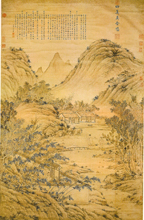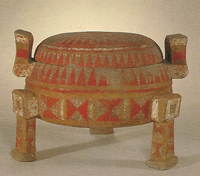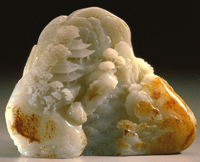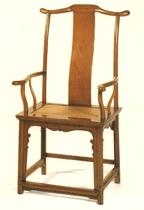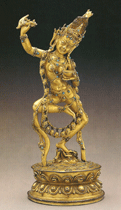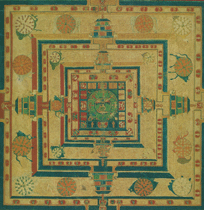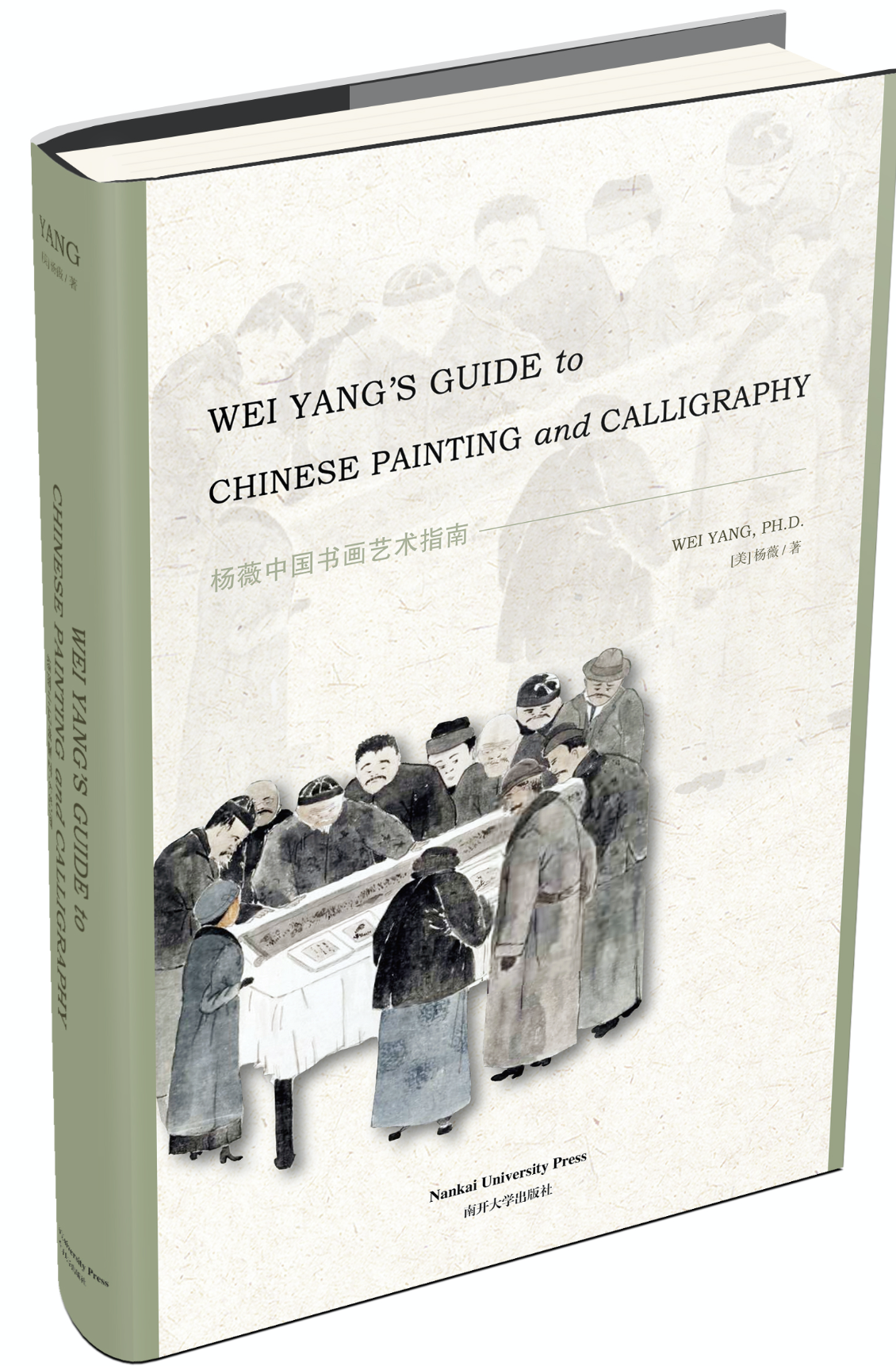CHINESE ART MARKET
CHINESE ART MARKET NEWS
March 10, 2025: Agence France-Presse from South China Morning Post reports: Auction sales of art plunge as Chinese market crashes, new data for 2024 shows. A 63% drop in art auction proceeds in China contributed to a one-third fall in global sales in 2024, to the lowest total since 2009.
Feb. 10, 2025: Rayal Uttam, from Art Basel reports: China's collectors defy market uncertainty. Recent data shows economic headwinds haven't dampened enthusiasm for blue-chip and emerging art.
Nov. 23, 2022: Lisa Movius and Shana Wu from The Art Newpaper report: Hong Kong's autumn auctions for modern and contemporary art saw a 38 % drop from last year.
Chinese art market is fairly resilient despite constant worries of a market slow down. The market continues to surpass expectations, with strong prices in archaic bronzes, Ming and Qing porcelain, and classical furniture. A combination of rarity, desirability and impeccable provenance push up sales prices. The market for non-Chinese Buddhist art remains strong, particularly for works in gilt bronze. Chinese collectors are acquiring bronzes originating from Mongolia, Tibet, Nepal and even S. India, probably due to the dearth of top-quality Chinese Buddhist art on the market.
The highest price fetched by a classical Chinese painting was Su Shi's work entitled "Wood and Rock" offered at Christie's Hong Kong in November 2018. Modern Chinese paintings were overshadowed by blue-chip pieces; imperial Chinese porcelains with definitive provenance still fetched the highest prices; Ming porcelain was surpassed by finest Qianlong period works; exceptional Song ceramics, such as Ru ware, were still desirable; classical Chinese furniture was very selective due to CITES restrictions on the rosewood family, including Huanghuali; Buddhist sculpture was one of the most impactful categories; there was a strong demand for excellent jade objects extending from the Neolithic period to Qing.
August 12, 2017, New York Times: Even for Collectors, Donating Art to a Museum Can Be Tough. It is a very interesting story about the dilemma of donating art to museum or a charitable organization. Paul Sullivan identifies a few important issues relevant to donation. Sullivan concludes that donating art to a museum is complicated, easy or difficult? depending on what you are donating and to whom you are donating. Most collectors make donations to enjoy a tax deduction. If the work goest to a museum, the donor gets the full deduction. If the art goes to a nonprofit where art is not central to this mission, the donor is eligible for only the value of the piece when it was purchased. Then, what would happen to your intended donation? 1) Any museum would say "Thank you, thank you and thank you," if you donate a Picasso worth $6 or $7 million. 2) The donation would be easier when a museum asks for it first. 3) An average donation is difficult to get approval. Being turned dowm is a reality. 4) The musuem might ask for additional money in the form of an endownment to accept your art. 5) Museums are concerned about provenance or authenticity. How to ease art collectors' stress on donating art to a museum or charity? Art professionals have some practical suggestions: 1) donating to charities where the art may be displayed or sold to finance projects; 2) donating to a midsize regional musuem or an encyclopedic museum where your works will be a focus.
Comments: From an art historian (Ph.D. in Chinese art and Tibetan Art), Dr. Wei Yang supports the museum's stand on the issues. In her professional opinions, 1) a museum should be selective by accepting only works of high quality and rarity. 2) A museum should be self-sufficient by having the resources to store the donated art of average quality, if accepted. 3) A museum should honor the patrimony laws that protect artifacts while accepting donations of questionable provenance or authenticity.
Feb. 25, 2017: Deborah M. Lehr reports: Chinese's Art Market is Booming-But Not for Foreigners. The demand for Chinese art and antiquieties is booming. But despite the buying frenzy, China's domestic market remains highly controlled, with the government restricting foreign firms' access while agressively encouraging Chinese firms to expand overseas. ... China's homegrown auction market has developed rapidly. Of the world's top ten auction houses, six are now Chinese-and all but one is just a decade old. Christie's and Sotheby's in China are still banned from selling "cultural relics" meaning any artworks created before 1949. However, "Cultural Relics" are the most profitable sales in China today.
WHERE TO BUY COLLECTIBLES
Buying Local is the best investment strategy.
Reaching out to the European and Chinese art markets for fine art works has always been burdensome, since many art investors forgot that gold is right under your nose. Buying a fine Chinese art work at a price far under the market value is feasible if you pay attention to the local auction and retail markets.
Some observations:
Selling family heirloom at a local auction house is normal. Art owners with no access to the prestigious auction market, limited sales budget, or lack of marketing skills often consider a low-cost local sales venue.
Selling for a lower price is standard. Sometime the sales agents lack the needed knowledge of Chinese art and visual aesthetics, thus often misidentify a less known art work.
Chinese art works with a desirable provenance is priceless.In the market flooded with forgery and fake, an established provenance (the chain of ownership) adds tremendous value to the subject art work.
Buying directly from seller is enticing. The direct seller-to-buyer transaction often entails higher profit. At least, you will save on commissions and fees charged by auction house or dealer for representation. If you are not sure about what you are buying, engaging an independent art consultant or appraiser is wise.
WHAT TO BUY
Fine Porcelains of the Republican Period Is Promising. The price of fine porceplain items of the first half of the 20th century has gone up dramatically. Paying attention to the masterpieces is always wise. Trying not to be tempted by jars with a Chinese character, " Double Happiness" motif is a must. Buyers should avoid purchasing less than perfect porcelain items.
Chinese Paintings by Female Artists Has Potentials. This is an attractive market for new collectors or collectors with a small budget. Chinese paintings by seventeen Chinese woman artists of the Ming (1368-1644) and Qing (1644-1911) are in demand. The smoothly rising statistics suggest that the value of fine classical Chinese Paintings by Female Chinese artist will continue to increase in the coming years.
Chinese Fan Paintings by Professional Artists are Collectibles. Classical Chinese fan painting has strong potentials. Market focus should be given to the performance of quality Chinese fan paintings created prior to 1949.
MERITS OF PREVIEW
-Preliminary Preview Option. If you need some professional guidance on value or the marketability of your property, considering a preview of your property for appraisal is cost-effective. Please keep in mind that not every piece of antique or artwork is valuable.
Preview informatiion is available at Preview My Artwork.
Dr. Wei Yang's Comments on your property will help you understand what you have and make an informed decision.
A Preview is NOT an Appraisal. Our preview comments represent our expertís opinions on the suitability of your artwork for appraisal. A Preview does not state a price, price range, or value (e.g., Fair Market Value, Insurance Replacement Value). Assigning a specific value to an artwork (which is the goal of a proper appraisal) requires in-depth research, proper identification of value features possessed by a property, consideration of comparables, and use of other appraisal principles and methodologies.
A Preview does NOT meet the requirements for insurance and taxation documents . Information included in a Preview is not sufficient for insurance and taxation, which require a qualified appraisal.
A Preview is NOT a certificate of authenticity. Normally, Dr. Wei Yang refrains from commenting on the originality of an artwork in her art consultation and appraisal. Unfortunately, avoiding the authenticity issue completely in art discussion is impossible because originality plays a key role in valuation.
Statements on Authenticity made by Dr. Yang are her personal and professional opinions, cannot be considered as a certificate of authenticity.
ART AUTHENTICATION
-Certificate of Authenticity
Dr. Wei Yang neither provides art authentication nor issues any certificate of authenticity in any form.
Dr. Wei Yang provides quality professional Chinese art consultation and Asian art appraisal services at an affordable rate. Dr. Yang believes that artowners should have access to quality professional art consultation and appraisal services. They deserve some professional compassion or generosity.
Need quality Asian art consultation and appraisal?
Starting with a preview of your property for appraisal is wise. Preview information is available at Preview My Artwork

